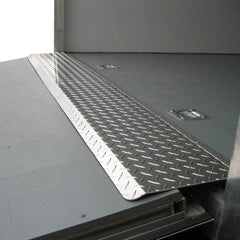- Home
- Pit Stop - The Pit Products Blog
- Tire Storage for Dummies
Pit Stop - The Pit Products Blog

1. What’s the first step in proper tire storage?
Like anything else, the best way to start the storage fun is to get things clean. Regular dishwashing liquid (a grease-cutter), some water and a tire brush will do the trick; be sure to remove any stones and other road debris from the treads. If you still have the tires on rims, then clean the wheels with an approved wheel cleaner. Wipe everything down when you’re done, to make sure everything is totally dry.Do not use tire dressing or tire gloss when storing tires.
A tip on race tires: Always remove race tires from the vehicle, then deflate them to about half the normal air pressure. A fully inflated tire, especially under the weight of the vehicle, can develop cracks. By removing the tire and deflating the pressure, the tire has room for temperature fluctuations.2. Should I store tires in tire totes?
While they are helpful for carrying tires, totes should not be used for long-term storage, unless you first clean the tires and wrap them in bags, then place them in totes. So put that box of contractor garbage bags under your workbench to work.The 55-gallon size should be large enough for most tires. Place each tire into a bag, and seal it up tight with good ol’ duct tape. Making sure that air and other materials stay out will save the lubricating oils in the tires, and tires will be ready for use as soon as you need them. (TIP: Use your vacuum cleaner to draw out air from the bags before taping them up.)
3. Which way should tires be stored?
Store mounted tires in stacks or on hooks
 Stacked mounted tires are a great solution. Do not stack tires too high – you don’t want a tower of tires falling. Restack every month or so. Alternatively, you can also hang mounted tires on hooks.
Stacked mounted tires are a great solution. Do not stack tires too high – you don’t want a tower of tires falling. Restack every month or so. Alternatively, you can also hang mounted tires on hooks.
Stand unmounted tires upright
DO NOT HANG THEM ON HOOKS. They will warp. Stand them up in a rack and rotate once a month or so.
4. Where should I store tires?
Of course, you need to keep tires cool, dry, and at a consistent temperature. The best option is storing them indoors in a well-ventilated place, if at all possible, and away from hot pipes/radiators, ovens, open flame, or battery chargers.
A climate-controlled workshop, garage, or storage unit would also be OK. Be sure to store items like mineral oils, fuel, and lubricating greases away from the tires. Keep tires away from your main work areas, and never use them as a “support” for a workbench. Pressure from the weight would cause distortions. Misplaced cigarettes, badly aimed drills, hot glue gun drippings or mislaid soldering irons will straight out ruin a tire.
You should also store tires away from machines that generate carbon monoxide, or ozone.
Some air cleaners/air purifiers, furnaces, central vacuuming units, laser printers and copiers, sump pumps, and similar electric motors create ozone, a strong oxidizer. It isn’t good for people, and it’s really not good for rubber. (Specifically, the ozone content in the storage area must not exceed 0.08 ppm.)
If tires have to be stored outside, try to keep them off the ground−on pallets, or at least with thin plywood between the tires and the ground−and well covered (see step 1). Ideally, tires shouldn’t be stored on a heat-absorbent asphalt surface, or in heavy humidity, such as near a pier or dock.
Storing them near reflective surfaces like sand or snow will also deteriorate the tires more quickly. Wherever you store them, make sure it’s out of the sun. Heat from direct sun can cause the rubber to break down, which would be disappointing when you retrieve them next season.
A tip for whitewalls: If you stack whitewall tires, stack white-to-white and black-to-black (white sides touching each other and black sides touching each other) to keep the white parts of the tire pristine.
5. What should I do when getting tires out of storage?
Double check the tires for cleanliness first, and look over the valve stems and caps for any signs of wear. Dump any water that may have condensed/collected during storage, and if there are any cracks or other discrepancies in the tires that give you doubt as to roadworthiness, have them checked by a professional before installation.Take tire storage seriously, and your tires will love you back!
Products
- ***Scratch & Dent***
- Accessories - Garage and Home
- Accessory Storage
- Base and Overhead Cabinet Combos
- Base Cabinets
- Featured Products
- Fluid Organizers
- FREIGHT SHIPPING CHARGES
- Fuel, Gears & Shocks
- Garage Cabinets, Aluminum
- Gift Card
- Helmet and Suit Storage
- Lockers
- New Products
- Overhead Aluminum Trailer Cabinets
- Package Deals
- Ramps and Loading
- Shelves and Bins
- Spare Parts
- Strap and Tool Hangers
- Tire Racks for Trailer, Garage & Workshop
- Trailer Accessories
- Trailer Cabinets, Aluminum
- Workstations and Door Cabinets

